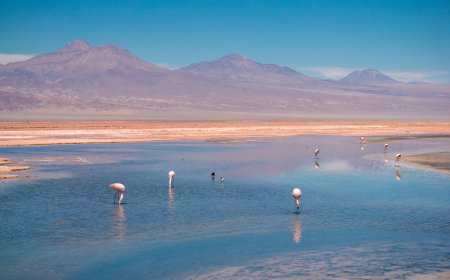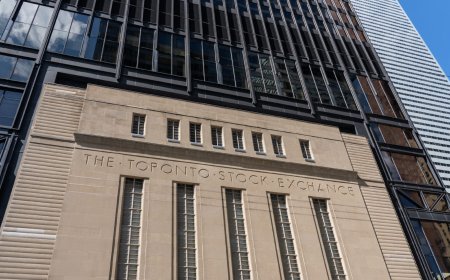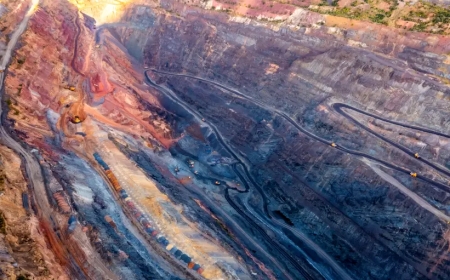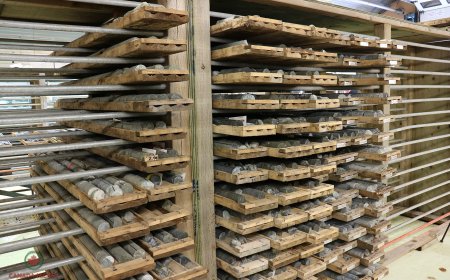Fraser Institute ranks global mining with 9% of survey
An annual report that may affect billions of dollars in investment decisions has a weak process to rank countries, provinces and states for mining projects, researchers say.



The Vancouver-based Fraser Institute, a research group that also calculates when Canadians have paid off their taxes – tax freedom day was June 19 this year – has published an annual list of mining jurisdictions in order of industry preference since 1997. It’s based on a survey sent to nearly 2,000 people at mining and exploration companies, the institute says.
The survey is being criticized by researchers at the Luleå University of Technology in northern Sweden. The ranking is merely an opinion poll of less than 200 respondents, or 9%, whose answers are fed into a process without clear definitions of political stability, labour markets nor geology, they say in a new report.
“The ranking outcomes do not constitute a meaningful scorecard that countries can employ to improve their mining-related policies,” researcher Magnus Ericsson said in a recent phone interview. “Neither do the results from the survey help investors make better decisions.”
The institute says the industry appreciates the ranking, even if it’s only a rough guide.
“The positive feedback we receive from various stakeholders—including miners, policymakers, and investors—reinforces our belief in our annual survey’s efficacy and usefulness,” Bryn Weese, the institute’s head spokesperson, said by email on Thursday. “We believe that the survey broadly captures the perceptions of those involved.”
The dispute over the annual ranking shows the desire for yardsticks to measure regional policies as the industry scours the globe to deliver mineral supplies for increasing demand. It also highlights the competition for mining investments among jurisdictions and companies as governments hike spending on critical minerals and wider society gradually clicks to the concept that green energy metals need to be mined.
Ericsson, who co-founded a mining data company that’s now part of S&P Global, is chief editor of the journal Mineral Economics where the report, “The perils of ranking mining countries and regions: a critical look at the annual survey of the Fraser Institute,” appeared last month. He said the institute’s small survey sample puts the reliability of the results in question while the grading system undermines its validity.
Data vs perception
It’s better to look at how some regions attract more investment than others based on figures from actual projects such as geology, government policies and spending as opposed to self-reported perceptions, Ericsson and his colleagues Patrik Söderholm and Frida Hellman concluded.
The institute’s ranking is composed of two measures, the Investment Attractiveness Index and the Policy Perception Index. Most of the same countries dominate in each, whether at the top or bottom.
“Certain jurisdictions consistently maintain their positions in the top or bottom-10 positions in our survey over multiple years,” Weese said. “This enduring pattern underscores the reliability and consistency of our survey data.”
The investment index is determined from respondent’s assessments of a regions’ geologic potential and their views of the government’s exploration investment policy.
The policy index considers regulation uncertainty and duplication, legal and tax systems, environmental rules, land claims, infrastructure, community development, trade barriers, political stability, labour laws, the geological database, security, and labour and skills availability.
“Regarding the survey’s broad policy categories, our survey is specifically designed to capture the perceptions of investors working across a diverse range of jurisdictions worldwide,” Weese said.
The Swedish university research cited Zambia as an example thwarted by the index. Mining investment has increased in the central African nation, but fewer than 10 respondents reflected on the country and its ranking fell to 58 out of 62 in last year’s table of investment attractiveness.
“There is thus a substantial risk that the annual survey has become nothing more than an opinion poll from a small group of individuals that are not representative of the global mining industry,” the Luleå researchers said.
“Exploration companies may have incentives to exaggerate the mining investment climate in jurisdictions in which they are currently pursuing exploration activities.”
Taxes debate
The institute, which has claimed climate change is natural weather events, may be avoiding debates over taxation and Indigenous rights when its assumptions are decided by a few people, the paper’s authors said.
“While low mining taxes will help improve the economic prospects of mining investment, they also reduce the opportunities to introduce tax-funded benefit-sharing mechanisms that in turn could improve the mining industry’s relations to the local community,” the authors said. “The Fraser Institute, with its free-market-oriented agenda, therefore risks burying several vital political issues.”
Some interviewees for the university report said the institute’s survey was biased and open to misuse, while others said it was reasonably useful and offered valid descriptions of what it’s like to operate in a certain area.
Moves by several governments such as South Africa, Namibia, Papua New Guinea and even high-ranked Australia to discuss ways to improve their processes after the institute’s 2022 list show its impact, the researchers said.
But participation in the survey fell from 700 people or about 18% of those asked to respond in 2012 to 180 people or 9% last year, Ericsson said. The researchers questioned whether too much weight comes from executives of junior gold exploration companies to skew the results and noted financial investors aren’t asked to participate.
Ranking fluctuation
While some key jurisdictions such as Nevada, Western Australia, Saskatchewan and Quebec routinely find themselves atop the lists, about 10 areas in recent years have fluctuated wildly. They place near the top one year then approaching the bottom the next. Botswana’s ranked 45 of 77 in 2019, then 11 and 66 before 10 last year.
“Regarding fluctuations for jurisdictions from year to year, it’s crucial to consider that new discoveries can quickly and dramatically alter investors’ perceptions,” Weese said. “The discoveries of deposits like Voisey Bay nickel and Lac De Gras diamond in Canada serve as evidence of how quickly and significantly investor sentiments can change.”
The World Bank’s Ease of Doing Business Index, a list critiquing red tape; Transparency International’s Corruption Perceptions Index, which ranks government malfeasance; and cost-of-living comparisons are other examples companies use to weigh global conditions when investing.
“Country performance indicators tend to simplify a complex regulatory reality,” the Luleå researchers said. But they also serve as benchmarks for policy reform that governments, companies and investors may seek to attain, they said.




















